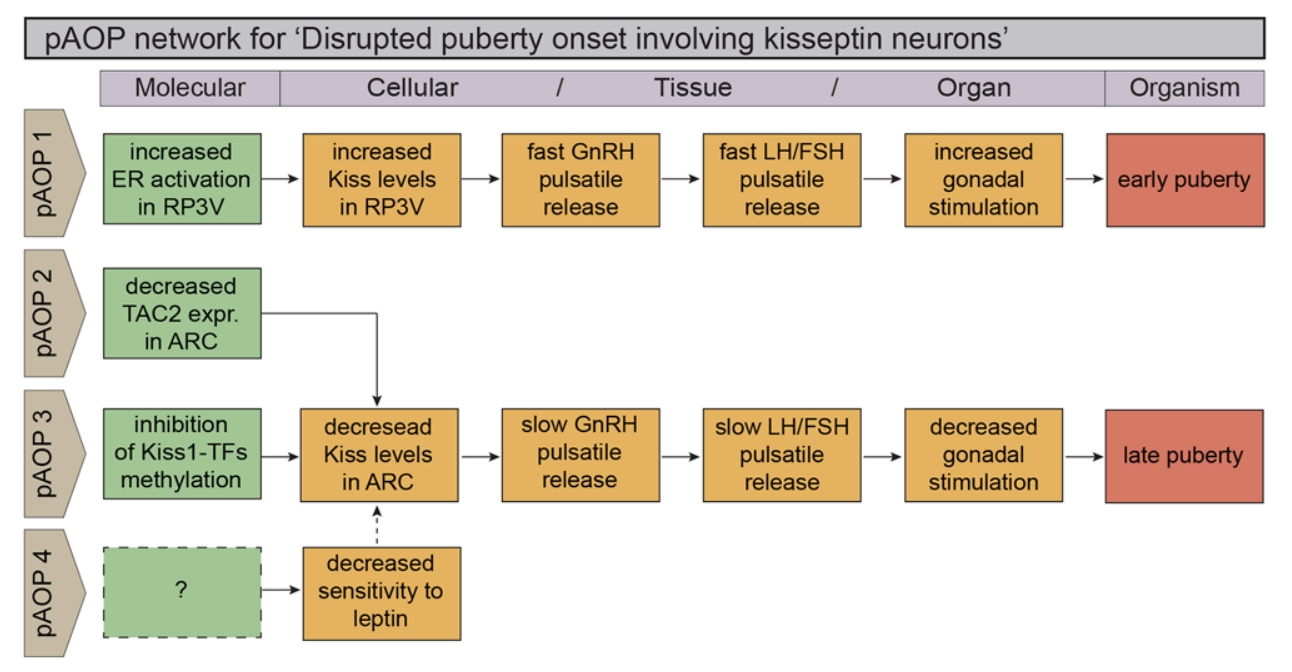Research part of the Horizon 2020 FREIA Project, aiming at improving the identification of chemicals that affect women’s health via disruption of the hormone system.
Summary. The average age for pubertal onset in girls has declined over recent decades. Epidemiological studies in humans and experimental
studies in animals suggest a causal role for endocrine disrupting chemicals (EDCs) that are present in our environment. Of concern, current
testing and screening regimens are inadequate in identifying EDCs that may affect pubertal maturation, not least because they do not consider
early-life exposure. Also, the causal relationship between EDC exposure and pubertal timing is still a matter of debate. To address this issue,
we have used current knowledge to elaborate a network of putative adverse outcome pathways (pAOPs) to identify how chemicals can affect pubertal
onset. By using the AOP framework, we highlight current gaps in mechanistic understanding that need to be addressed and simultaneously point
towards events causative of pubertal disturbance that could be exploited for alternative test methods. We propose 6 pAOPs that could explain
the disruption of pubertal timing by interfering with the central hypothalamic trigger of puberty, GnRH neurons, and by so doing highlight
specific modes of action that could be targeted for alternative test method development.
This project was held at the laboratory of Prof. Anne-Simone Parent
(GIGA-Neuroscience, University of Liege, Belgium).
Related publications

